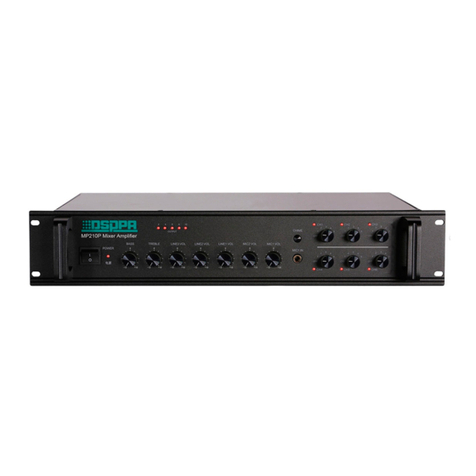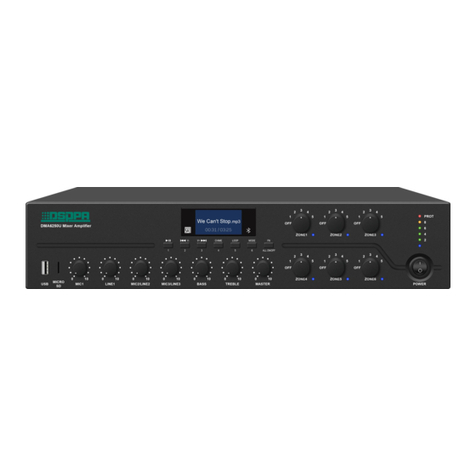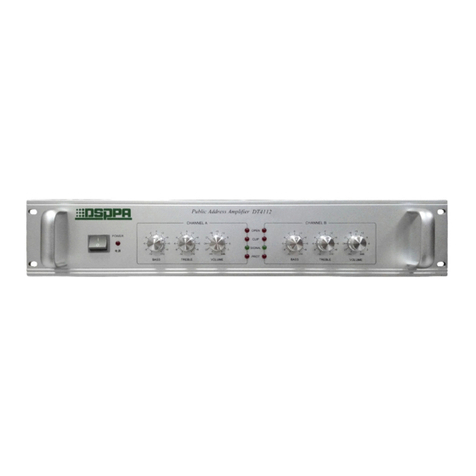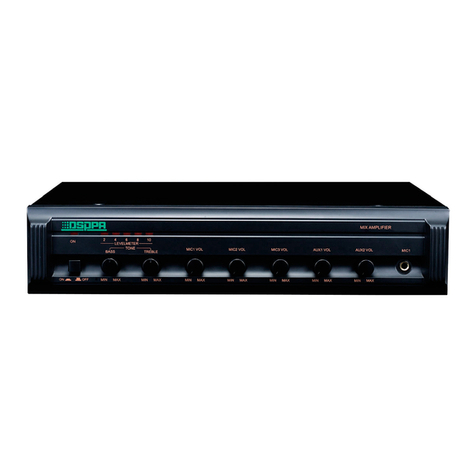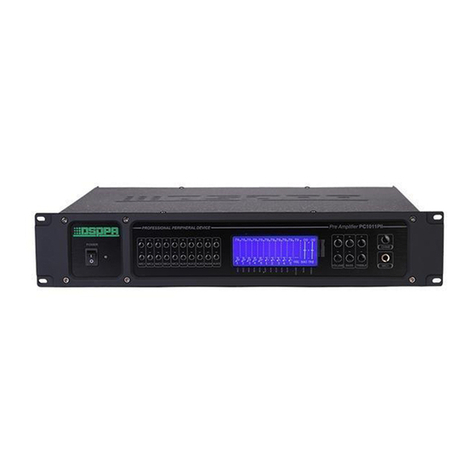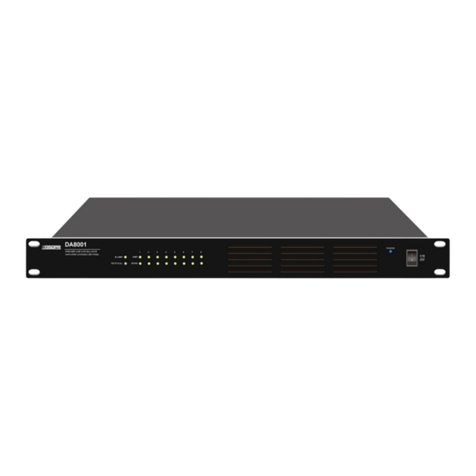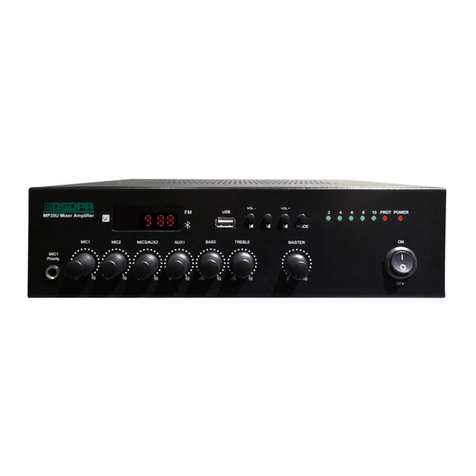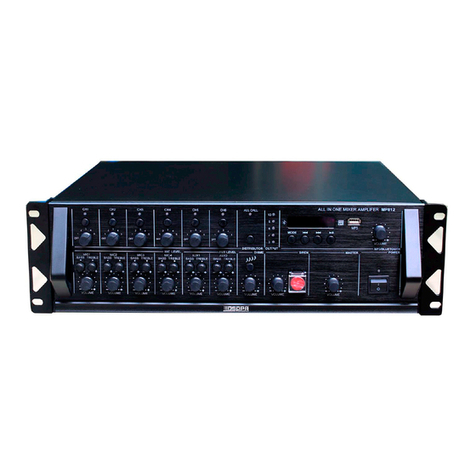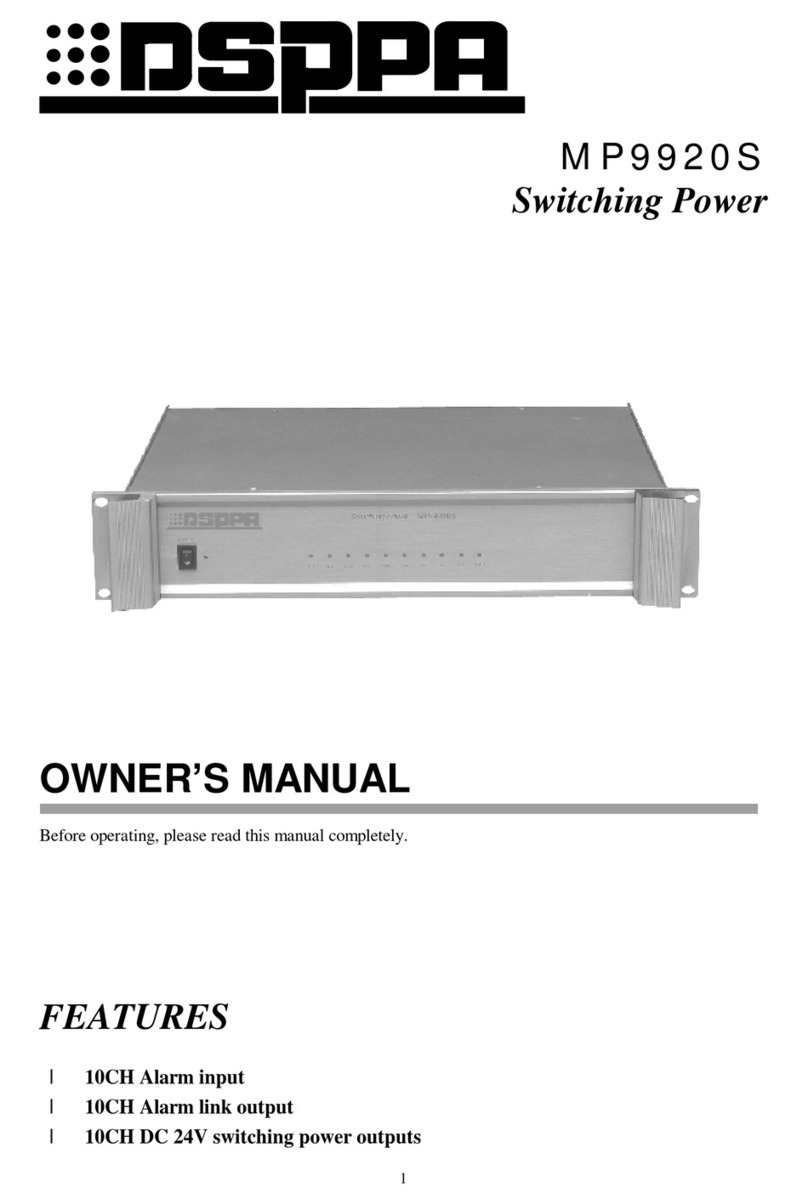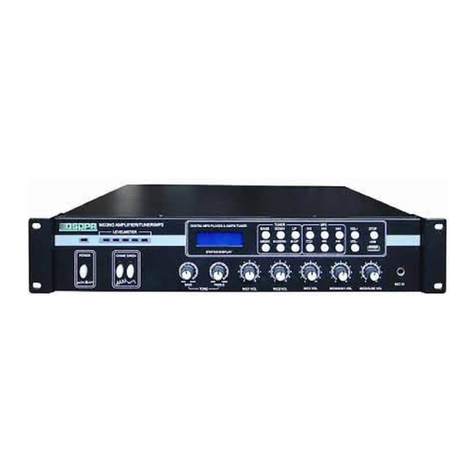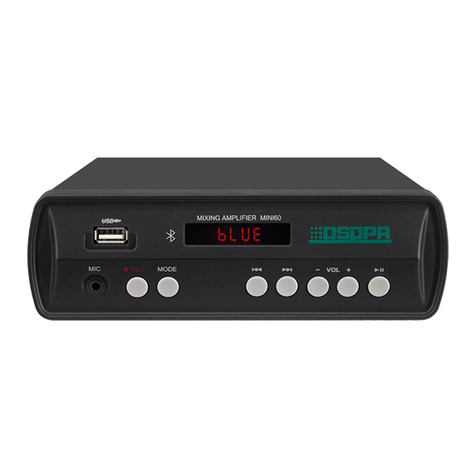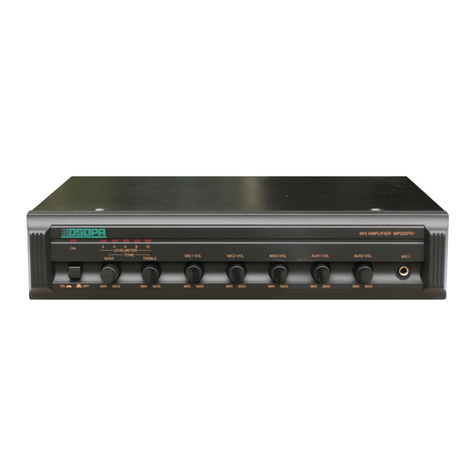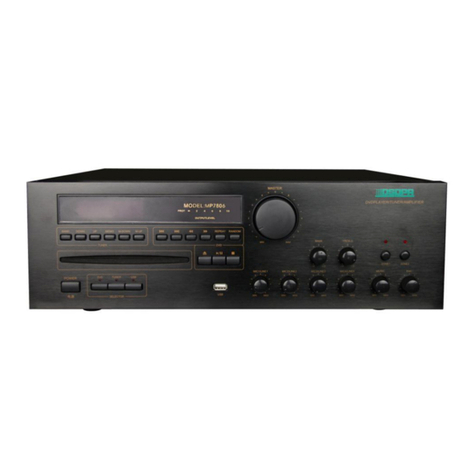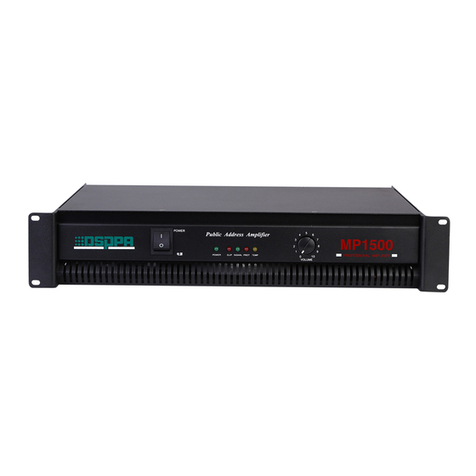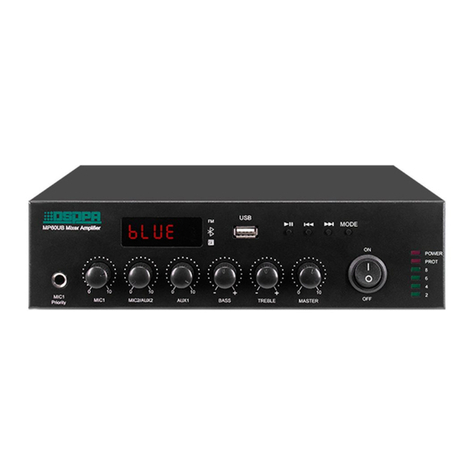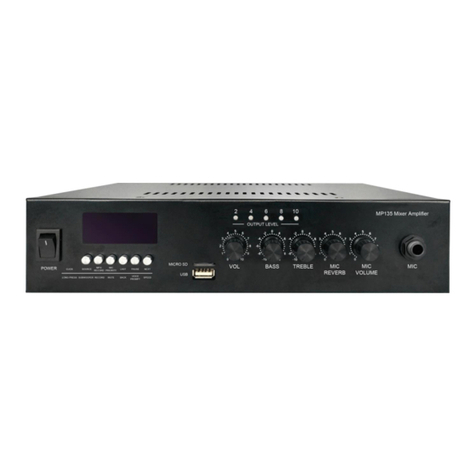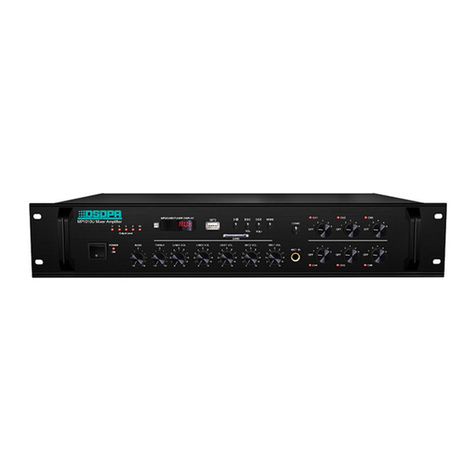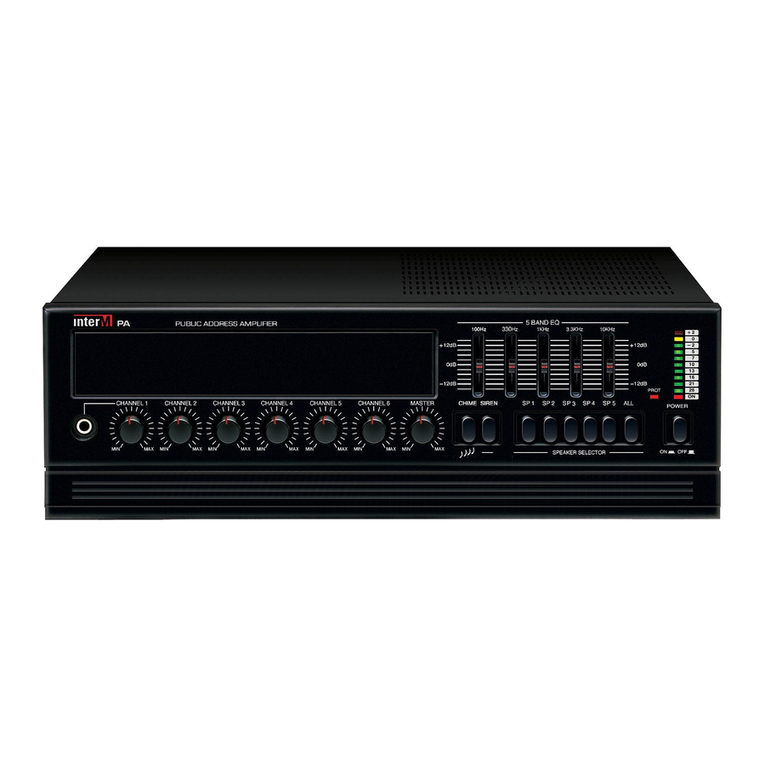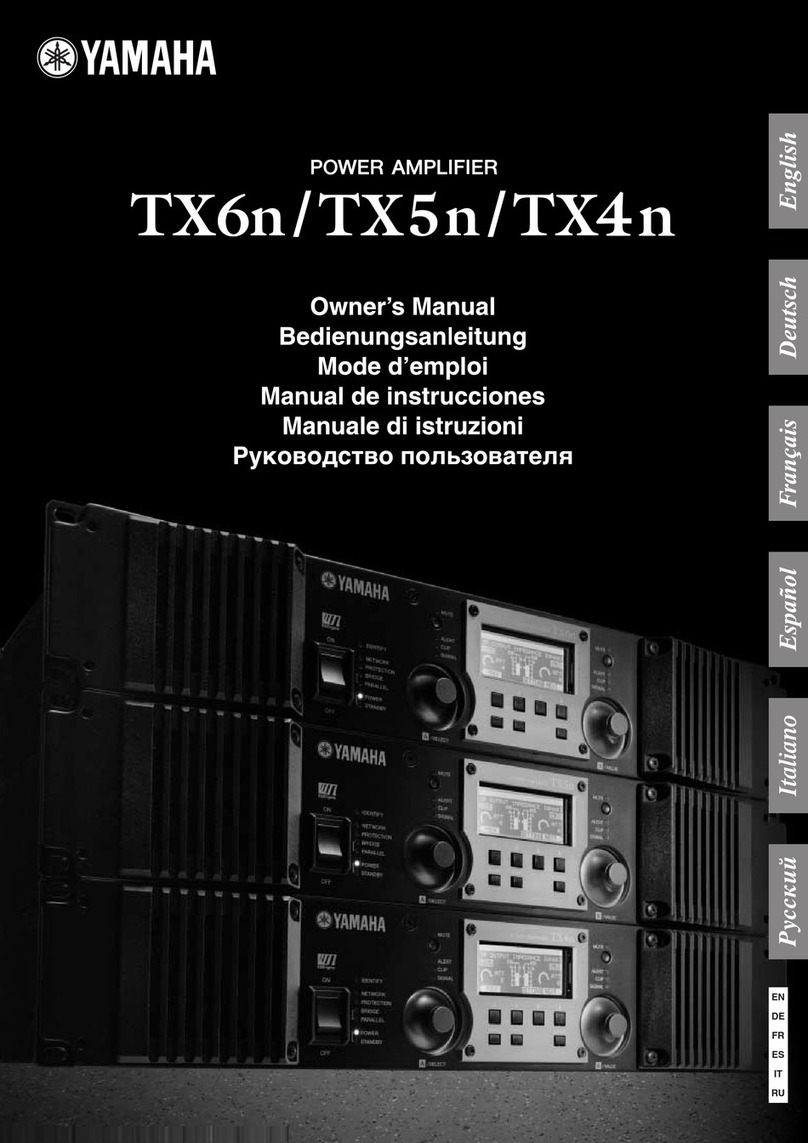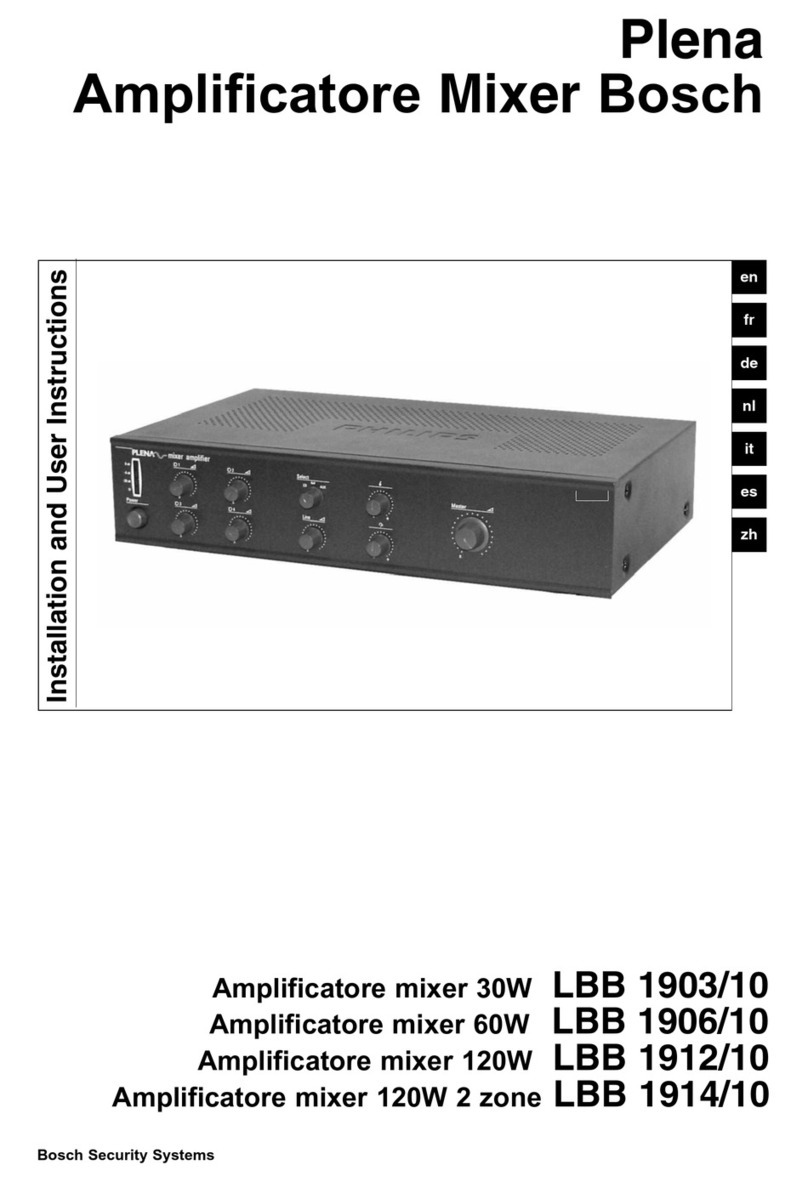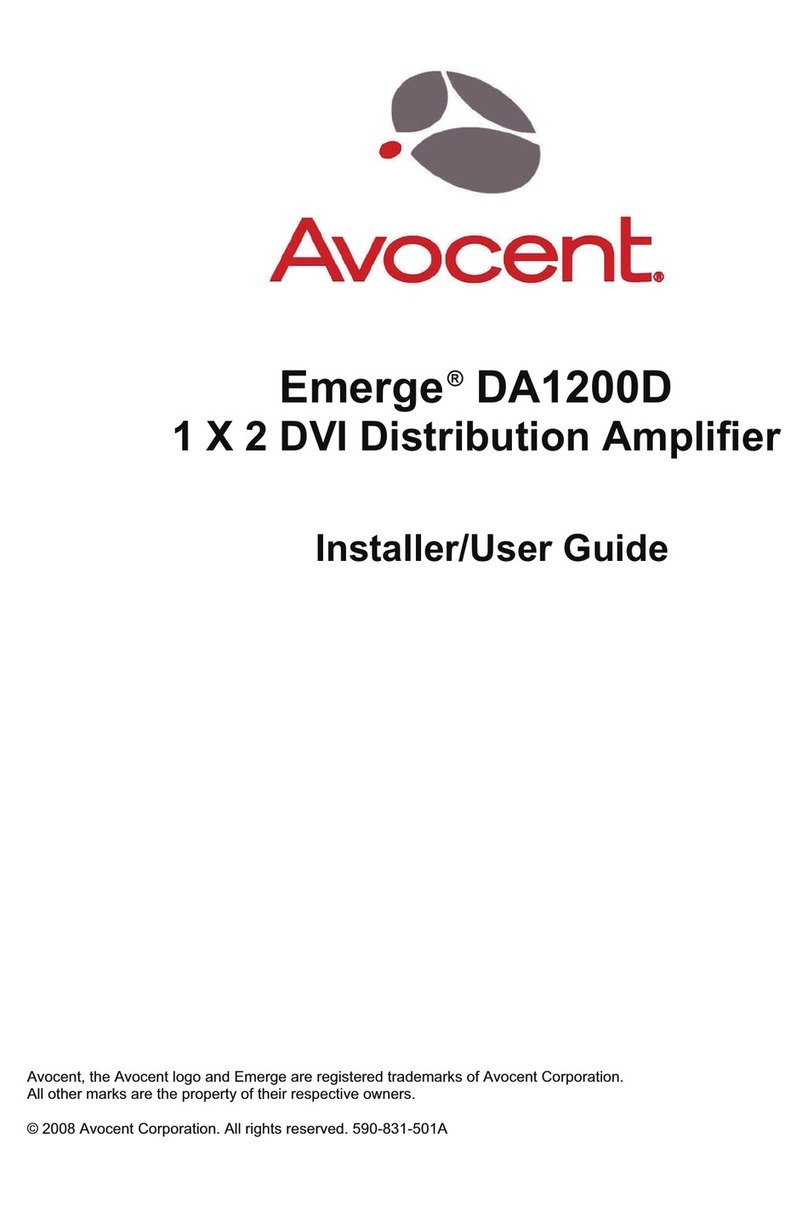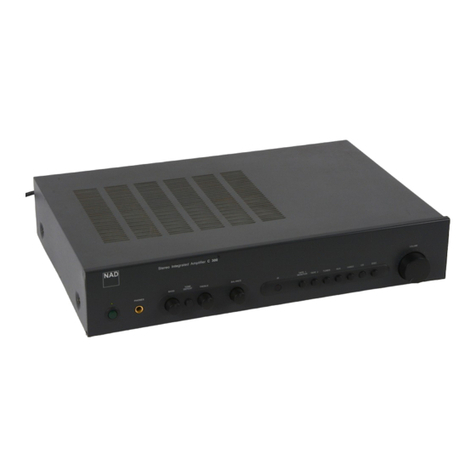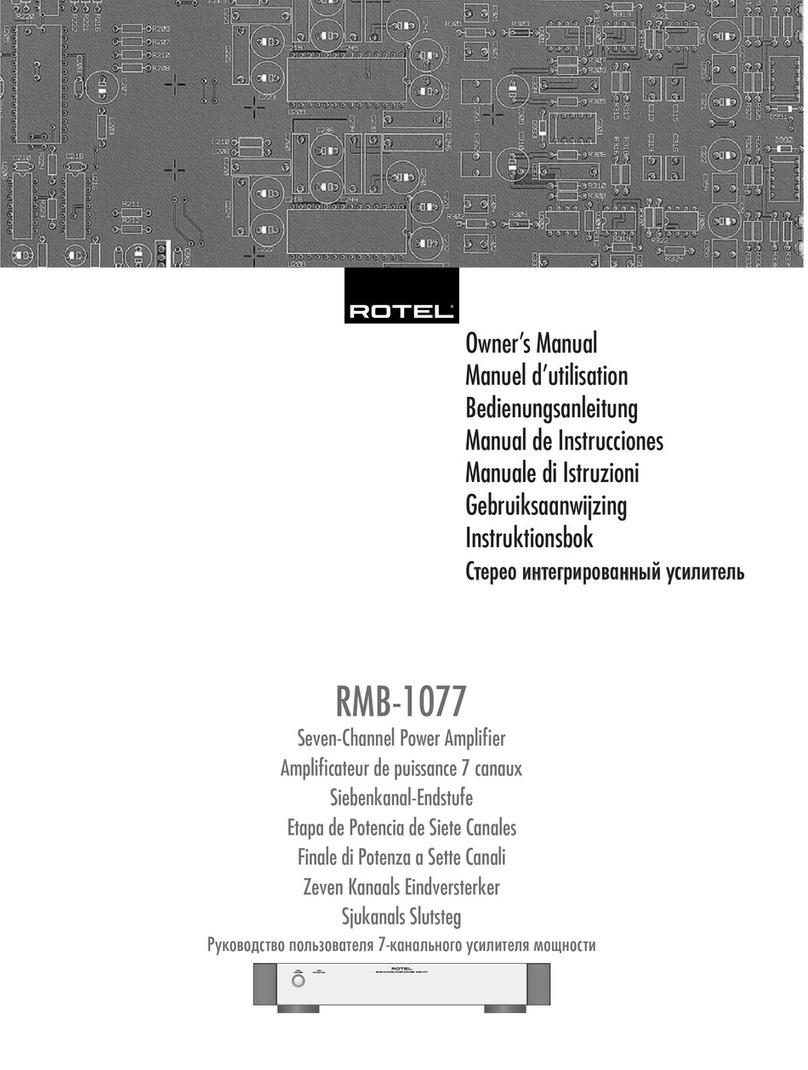
M/S Amplifier
6
turned on and off individually and remotely using the network.1
3.2 Volume adjustment interface operation instructions2
3 Volume adjustment interface4
When you need to adjust the volume of a channel, touch the channel to enter the volume interface setting, and5
slide the button or touch “+—” to adjust the channel volume.6
Touch“ ”can turn off the channel power7
Manual switch (OFF/ON)8
a. Automatic call preparation (Hand tuning switch is at “OFF”):9
8 master amplifier in the automatic call state. The priority of the standby power amplifier is:10
The first channel has the highest priority, and the eighth channel has the lowest priority11
Example:In the automatic call state, when channel B fails or is overheated:12
(1) If the other amplifiers are normal and the standby power amplifier is idle, the standby power amplifier is13
directly called to continue broadcasting.14
(2) If the power amplifier is already occupied by the main amplifier A, the main amplifier B is compared with the15
main amplifier A for priority comparison.16
The priority of main amplifier B is lower than that of main amplifier A. Therefore, main amplifier B cannot call17
the standby amplifier. The main amplifier B can only stand still and show "failure" or "overheating".18
The priority of the main power amplifier B is higher than that of the main power amplifier A, and the main power19
amplifier B directly seizes the standby power amplifier. Main amplifier B shows "self-tuning."20
After the main power amplifier Aloses its standby power amplifier, it shows "failure" or "overheating" at rest, and21
the main power amplifier A stops outputting. This is an occupancy process.22
After channel B takes up the standby power amplifier, it assigns its own volume value to the standby amplifier.23
The power amplifier uses this volume value to control its own affiliation, so the volume does not change during24
the whole process. Channel B is idle and its volume drops to zero.25
(4) When the original affiliation of channel B is restarted, normal operation can be resumed. Channel B26
automatically releases the standby amplifier. Re-allocate the work of the power amplifier. The standby power27
amplifier is reoccupied by the current highest priority fault channel. This is the release process.28
